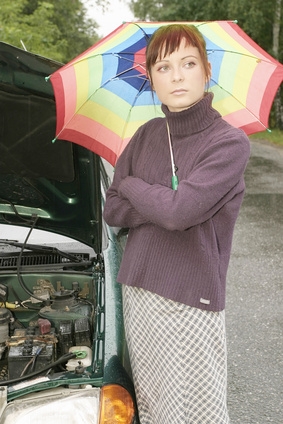
Whether your car has recently endured a flood or you have water damage from another source, various methods for resolving any water damage issues your vehicle may have are available. Using a few tips, you can get your car running as if it had never experienced water damage.
Check your car's engine and transmission fluids for any issues. Use a dipstick to check the oils and fluids of your car for any inconsistencies. If the fluids are milky, diluted or discolored, there is an increased chance that there is water in the car's pans. If this is the case, call a towing company; you should not drive if there is water damage in your car's pans and fluid system. The fluids will be drained and replaced if this is the issue.
Inspect your car's suspension joints and also the undercarriage of your car for water damage. Lubricate the car's joints to repair them if water damage has occurred in these areas.
Inspect the exterior of your car (the bumper and radiator area) as well as your headlights. Remove all excess water from your headlights and replace them if necessary. Clean any other exterior areas of your car with water damage or excess debris such as grass or dirt.
Check the interior seats and carpeting of your car for mold and water damage. If your interior has water damage and you do not replace this you may have odors and a potential mold problem. Call a professional carpet and interior cleaner for cars, or have the interior replaced completely depending on the extent of the water damage.
If your car is making noises unfamiliar to you after a water damage incident, this may be a sign that you have damage from water elsewhere in your vehicle. If you are hesitant, have your car towed, as driving with water issues and problems can permanently damage your vehicle.